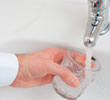

The new Unilever plant at Riverhorse Valley produces well-known brands such as Knorr, Robertson’s, Knorrox, Aromat and Rajah. The factory has been designed with sensitivity towards sustainable systems and processes; one of the aims being to achieve water neutrality. The water recycling plant (WRP) provides high quality treatment of factory wastewater and captured rainwater, to South African drinking standards, to enable the treated water to be recycled for factory use.
Hybrid Automation and Aqueduct PLC engineer the solution
Aqueduct PLC, a global sustainable engineering company, was asked to design and build an effluent treatment and recycling system that utilises all possible sources of water (such as rainfall, process water and domestic water) to allow the site to limit or eliminate the use of incoming water from neighbouring towns and therefore achieve water neutrality. Aqueduct based the self-sustaining water supply proposal and solution design upon well-established treatment techniques from global process vendors who had completed many installations around the world.
The WRP incorporates ‘best available technology’ in the form of a dissolved air flotation unit, membrane bioreactor (MBR) and reverse osmosis (RO) plant in the treatment process. The design approach was to select the minimum treatment required for each stream to achieve the water quality required, minimising carbon footprint and maximising the volume of water recycled.
The design incorporates rainwater harvesting and aims to return treated shower water and process wash water to the recycle tank and thus minimise the use of the town water supply. The rainwater treatment is part of the water recycling plant, comprising an up-flow sand filter and activated carbon filter, before it joins the common treatment line for final disinfection by UV and chlorine, followed by remineralisation to compensate for the minerals removed in the RO process treatment line.
A Siemens S7 300 PLC was installed to control the process with a 12-inch colour HMI touch screen. Ethernet and Modbus serial cards were added to link the plant with building management and a Siemens WinCC scada system. Two extra Profibus remote I/O stations were also added.
The control system includes flowmeters to measure the flow of water and level sensors to control tank levels, as well as level switches for safety. Pressure transmitters are used to control the blowers that feed air into the aeration tanks in order to keep the bacteria alive. Temperature probes were added to maintain the biological process and pH control was achieved using cascade control.
The amount of water flowing through the plant is measured, chlorine is dosed in proportion and the pH is controlled. To make sure that control is accurate, Hybrid Automation added multiple probes at various sample points. At any point of measurement, two probes are used and a comparison is done.
On the inlet and outlet feed of the tanks duty/standby control is implemented for the pumps; instruments protect and ensure that all pumps are undamaged. Software was engineered to ensure robust, versatile and hassle free operation, and maintenance can be carried out while the plant is in operation.
All instruments and equipment on the plant are represented on the HMI display using colour animation and text pop ups with alarms sent to the building management system as this plant is on a remote area of the site. Success is measured by the quality of the output, in this case the purity of the recycled water.
The effluent treatment plant provides a high quality treatment and recycling system with built-in safeguards to ensure that health and safety are not compromised; as such, it aims to achieve Unilever’s goal of water neutrality. To date, the new facility has benefitted significantly from the solution in terms of its water bill, costs and environmental sustainability.
For more information contact Shikthar Komal, Hybrid Automation, +27 (0)31 573 2795, [email protected], www.hybridautomation.co.za or [email protected], www.aqueductplc.com
| Tel: | +27 11 548 9960 |
| Email: | [email protected] |
| www: | www.profiafrica.co.za |
| Articles: | More information and articles about PI SA (PROFIBUS & PROFINET SA) |
| Tel: | +27 31 573 2795 |
| Email: | [email protected] |
| www: | www.hybridautomation.co.za |
| Articles: | More information and articles about Hybrid Automation |

© Technews Publishing (Pty) Ltd | All Rights Reserved